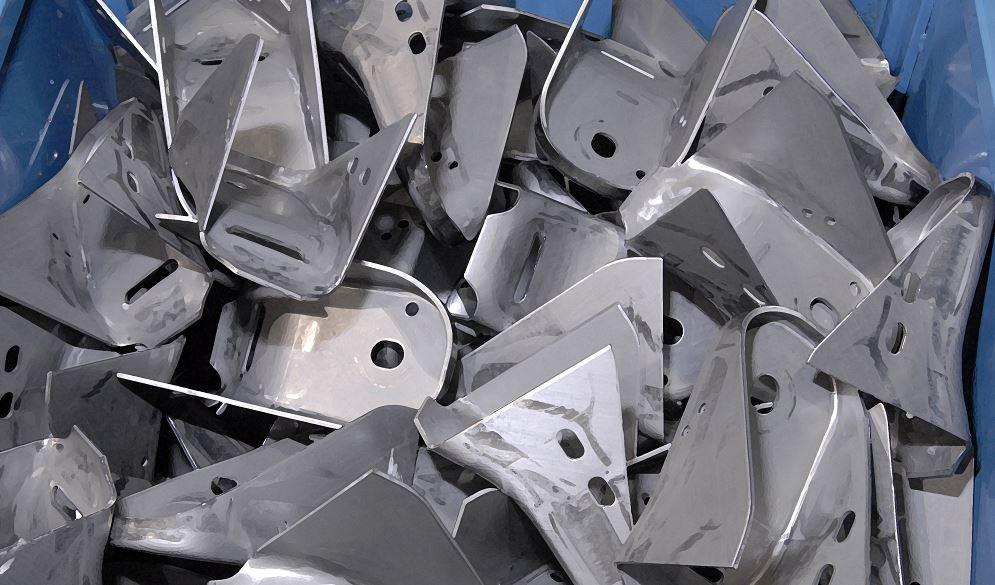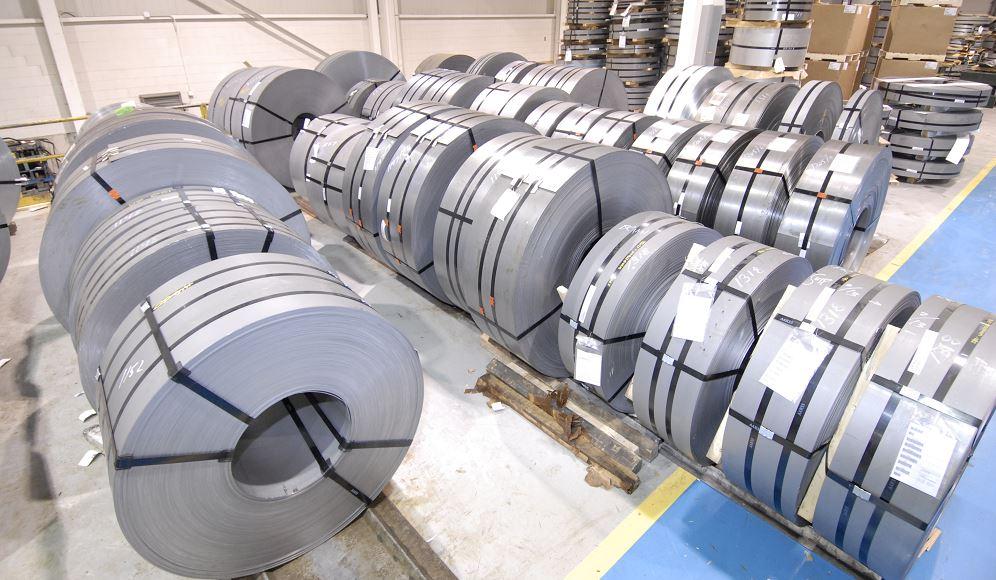Vice President of Sales and Marketing
- FMA
- The Fabricator
- FABTECH
- Canadian Metalworking
Categories
- Additive Manufacturing
- Aluminum Welding
- Arc Welding
- Assembly and Joining
- Automation and Robotics
- Bending and Forming
- Consumables
- Cutting and Weld Prep
- Electric Vehicles
- En Español
- Finishing
- Hydroforming
- Laser Cutting
- Laser Welding
- Machining
- Manufacturing Software
- Materials Handling
- Metals/Materials
- Oxyfuel Cutting
- Plasma Cutting
- Power Tools
- Punching and Other Holemaking
- Roll Forming
- Safety
- Sawing
- Shearing
- Shop Management
- Testing and Measuring
- Tube and Pipe Fabrication
- Tube and Pipe Production
- Waterjet Cutting
Industry Directory
Webcasts
Podcasts
FAB 40
Advertise
Subscribe
Account Login
Search
Agile cost estimating for metal stamping operations with ERP software
Relax tight margins with accurate pricing and data analysis
- By Kelly Ott
- April 6, 2023
- Article
- Bending and Forming

Labor costs are significant. To ensure accuracy, setup and primary/secondary labor costs should be captured at each manufacturing step.
Metal stampers in the manufacturing industry know that margins are tight, especially if they are required to pass on profitability improvements to customers over the course of a contract. Implementing enterprise resource planning (ERP) software systems that provide stampers with the ability to capture costing data is the first step towards achieving profitability. Analyzing the costing data captured by the software is imperative to maintaining and increasing profits.
Accurate quoting is directly correlated to potential profitability. Accessing current and historical data related to labor, materials, and overhead costs of the machines is the start to understanding costs and helps stampers quote accurately.
After a quote is awarded to a stamper, it’s important that they do a detailed item cost setup. This entails tracking costs by operation and work center with accurate overhead, labor rates, consumable materials, and packaging.
When a part is scheduled for production, detailed data collection is imperative to identify issues on the shop floor that could inhibit profits. Costs of scrap, downtime, machine operation, tooling, and meeting quality standards all potentially depress profits. Labor, material, and overhead cost data captured at a granular level allows stampers to identify bottlenecks and eliminate problems while continuously improving.
It isn’t enough to just capture the data, however. It’s imperative that stampers review the collected data. Comparing the standard cost of an item with the sale price might appear profitable based on margins, but more important are the actual costs that have been collected from the shop floor data.
Accurate Costing Starts With Accurate Quoting
This is how stampers can ensure the best chance of profitability before a part goes into production on the plant floor.
The first step in ensuring effective costing is starting with an accurate quote. Gone are the days where stampers had to guess at ideal and actual run rates. Now, many ERP systems provide data captured directly from machines and production information from the shop floor. These metrics can be used to determine actual run rates that factor in machine downtime and run rate averages over a period of time. Current associated labor, setup, and overhead rates for a work center also will be added to a quote, all already populated in the software.
Accessing a database of current materials' standard costs and purchase prices can provide stampers with a starting point to ensure materials are quoted correctly.
Capturing Details on a Granular Level Enhances Accuracy
Capturing granular details when setting up an item in a system related to overhead, labor, and materials helps stampers improve cost accuracy. When a stamper performs part setup, it is important to capture each manufacturing step in detail. This includes selecting a work center or group of work centers for each operation. All of them should have multiple options for capturing expected costs, including overhead rates, setup rates, and primary and secondary labor rates.
Labor costs are significant. To ensure accuracy, setup and primary/secondary labor costs should be captured at each manufacturing step.

Many inputs comprise the actual cost of a part. Stampers often struggle to contain the cost of making a part so that its actual cost is at or below the quoted cost. With so many variables on the shop floor, including multiple work centers, downtime, scrap, tooling, equipment, and quality issues, it is often difficult to ascertain which area is “costing” the most.
The final piece that is important as part of an item setup is to capture the cost of materials used at each operation, including raw materials, components, and packaging. For each part, the system also should collect consumption data from the operation.
Data Collection Includes Actual Costs at Every Work Center
Data collection should include actual metrics for labor, materials, and overhead at all work centers to determine the actual cost of making a part.
An ongoing struggle for stampers is ensuring that the actual cost of an item is less than the quoted cost to maintain profitability. With so many variables on the shop floor, including multiple work centers, downtime, scrap, tooling, equipment, and quality issues, it is often a struggle to understand which area is “costing” the most. It is imperative that a system capture actual costs of each process.
Labor cost accuracy requires capturing the time it takes for employees to set up a die or machine. Data capture should include how many employees were part of a production run. This can be done by having each employee log their time per run.
It’s important to know how long a work center was in use. ERP systems that can connect directly to a machine ensure accuracy when logging work center and equipment time. This time calculation also is used to capture actual overhead costs.
Although predicting material usage is important to ensuring the right material is available at the time of production, capturing the actual material usage is important for calculating actual costs. This includes capturing the true yield of materials, consumption, and scrap quantity. Stampers should make sure to calculate the actual purchase price of raw material for a production run. That helps them to understand material costs and how purchase price variance affects profits.
Reviewing Expected Versus Actual Cost Variances Promotes Continuous Improvement
Labor, overhead, and materials costs are what manufacturers are most interested in. When expected costs are clearly categorized into these three areas, it allows stampers to determine profitability as well as address potential improvements unique to the category.
Many real-life shop floor scenarios can affect each category.
Can a company improve profits by having a different operator run a particular job, thereby affecting labor costs? Or can the same employee set up the die and run the job instead of having two different employees?
Can the part run on a machine with a lower overhead or setup rate?

When a stamper performs part setup, it is important to capture each manufacturing step in detail. This includes selecting a work center or group of work centers for each operation.
Can cost savings be realized if less material is scrapped before getting a first good piece?
Having the ability to drill down in each category for a particular part number, time frame, or production run provides an opportunity to understand why a stamper is or is not profitable—and make changes.
ERP software can help stampers capture expected costs, but when a predictive plan goes array, systems that capture real-time data will provide manufacturers with the competitive advantage they need to ensure maximum profits and longevity.
About the Author
Kelly Ott
30 Duke St. West Suite 1101
Kitchener, ON N2H 3W5 Canada
877-417-1212
subscribe now

The Fabricator is North America's leading magazine for the metal forming and fabricating industry. The magazine delivers the news, technical articles, and case histories that enable fabricators to do their jobs more efficiently. The Fabricator has served the industry since 1970.
start your free subscription- Stay connected from anywhere

Easily access valuable industry resources now with full access to the digital edition of The Fabricator.

Easily access valuable industry resources now with full access to the digital edition of The Welder.

Easily access valuable industry resources now with full access to the digital edition of The Tube and Pipe Journal.
- Podcasting
- Podcast:
- The Fabricator Podcast
- Published:
- 04/16/2024
- Running Time:
- 63:29
In this episode of The Fabricator Podcast, Caleb Chamberlain, co-founder and CEO of OSH Cut, discusses his company’s...
- Trending Articles
Tips for creating sheet metal tubes with perforations

Are two heads better than one in fiber laser cutting?

Supporting the metal fabricating industry through FMA

JM Steel triples capacity for solar energy projects at Pennsylvania facility

Omco Solar opens second Alabama manufacturing facility

- Industry Events
16th Annual Safety Conference
- April 30 - May 1, 2024
- Elgin,
Pipe and Tube Conference
- May 21 - 22, 2024
- Omaha, NE
World-Class Roll Forming Workshop
- June 5 - 6, 2024
- Louisville, KY
Advanced Laser Application Workshop
- June 25 - 27, 2024
- Novi, MI



























